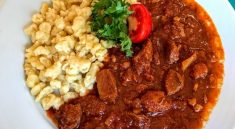When searching for a reliable seafood supplier in Singapore, the journey often begins in the bustling halls of Jurong Fishery Port, where the day’s catch arrives in the pre-dawn hours. Like a well-orchestrated symphony, these suppliers form the backbone of Singapore’s renowned culinary scene, operating in a fascinating ecosystem that few outsiders truly understand.
The Tipping Point of Singapore’s Seafood Industry
Consider this peculiar reality: Singapore, despite its modest size, consumed an impressive 120,000 tonnes of seafood in 2023, averaging 21kg per person annually. This remarkable appetite for marine delicacies has created an intricate network of suppliers who operate with the precision of air traffic controllers, ensuring fresh catches reach their destinations within hours.
The Art and Science of Seafood Distribution
What makes certain seafood suppliers stand out in this competitive landscape is their mastery of what I call the “cold chain choreography.” This isn’t merely about keeping fish cold; it’s about maintaining precise temperatures at every stage of the journey:
- Primary storage (0-2°C): Where the morning’s catch first arrives, requiring meticulous monitoring and rapid processing
- Transport conditions (-1-1°C): The critical phase where timing and temperature control must dance in perfect harmony
- Final delivery (0-2°C): Where the handover to restaurants becomes an art form of its own
The Psychology Behind Restaurant Loyalty
In my conversations with Singapore’s leading chefs, a fascinating pattern emerged. The most successful suppliers aren’t necessarily those with the largest inventories or the lowest prices. Instead, they’ve mastered what behavioural economists might call “strategic reliability” – the ability to consistently deliver not just products, but peace of mind.
Quality Assurance: The Invisible Hand
The most intriguing aspect of Singapore’s seafood supply chain is its rigorous quality control system. Consider these compelling statistics:
- 93% of Singapore’s seafood is imported
- The Singapore Food Agency conducts over 5,000 food safety inspections annually
- Less than 0.3% of imported seafood fails quality control tests
These numbers tell a story of excellence that rivals any global standard.
The Innovation Factor
What truly separates exceptional suppliers from adequate ones is their embrace of technology. The most forward-thinking companies have adopted blockchain tracking systems, allowing restaurants to trace their seafood from ocean to plate. This transparency isn’t just about accountability; it’s about storytelling. When a chef can tell diners exactly where their red snapper was caught and how it made its journey to their plate, it transforms a meal into an experience.
Sustainability: The New Currency
In Singapore’s sophisticated market, sustainability has become more than a buzzword. The most successful suppliers have recognised that environmental responsibility is now a business imperative. They’re investing in:
- Partnerships with sustainable fishing operations
- Advanced waste reduction systems
- Carbon footprint tracking and reduction initiatives
- Education programmes for their restaurant clients
The Future of Seafood Supply
The landscape is shifting rapidly. With Singapore’s “30 by 30” goal – producing 30% of its nutritional needs locally by 2030 – innovative suppliers are already positioning themselves at the intersection of traditional import models and emerging local aquaculture operations.
The Cultural Connection
Perhaps the most overlooked aspect of successful seafood supply in Singapore is the cultural intelligence required to serve a diverse market. The best suppliers understand that a Chinese restaurant’s requirements for live fish differ fundamentally from a Japanese restaurant’s needs for sashimi-grade products. This cultural fluency isn’t learned overnight; it’s accumulated through years of experience and careful observation.
Practical Implications
For restaurants and food service businesses, the choice of a seafood supplier transcends simple transactions. It’s about finding a partner who understands the delicate balance between quality, reliability, and value. The most successful partnerships often develop when suppliers position themselves not just as vendors, but as consultants and collaborators in their clients’ success.
As Singapore’s culinary scene continues to evolve, the role of seafood suppliers becomes increasingly sophisticated. They’re no longer merely links in a supply chain; they’re curators of quality, guardians of sustainability, and partners in their clients’ success. In this complex ecosystem, success depends not just on what you supply, but how you supply it. For businesses seeking to elevate their seafood offerings, the key lies in partnering with a seafood supplier in Singapore who understands these nuanced dynamics.





